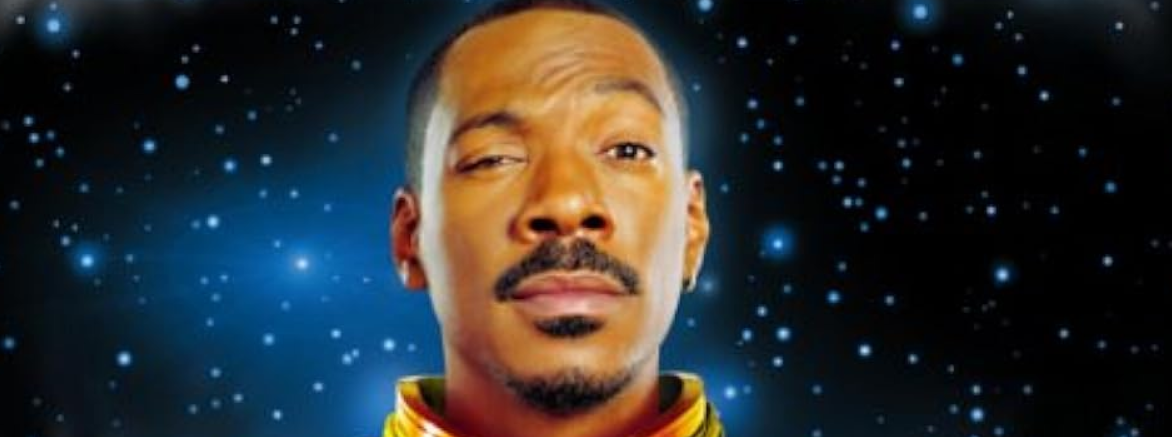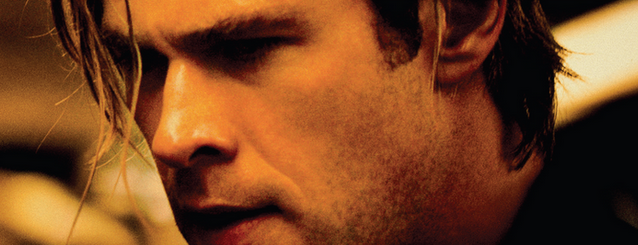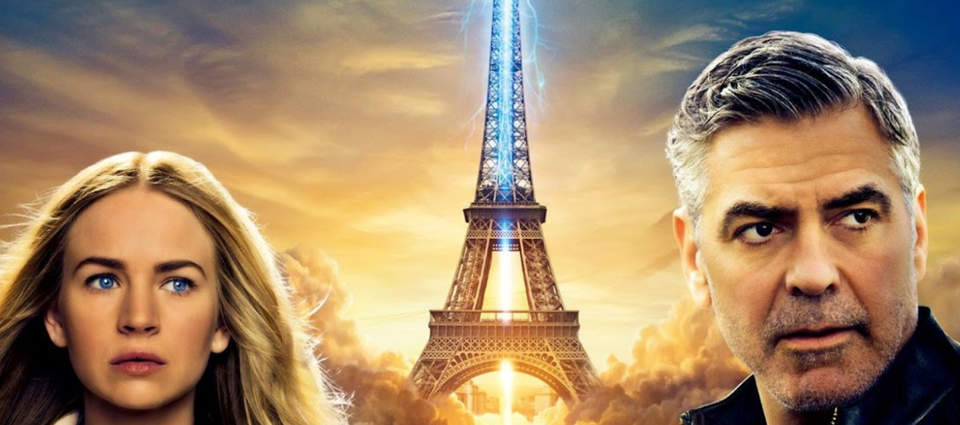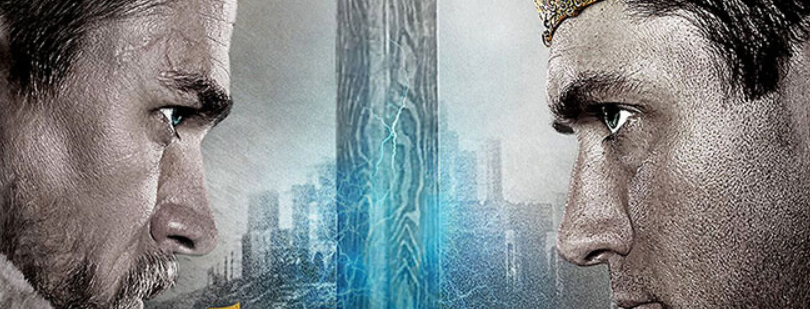Titan A.E.
Toy Story changed the landscape of animated movies forever. The bar was raised by Pixar and even Disney struggled to get over it. But what about veteran animator Don Bluth? How would he respond?

And we’re back with another instalment of our irregular series, Films Which Failed To Save Their Production Companies. It’s always a sad story when this happens. Admittedly, the death of Carolco and Cutthroat Island didn’t harm the career of the director, Renny Harlin. The failure of Titan AE destroyed the careers of its co-directors, Gary Goldman and the king of 1980s non-Disney animation, Don Bluth.
Bluth had been working for Disney for quite a long time when the 70s ended. He’d ascended the ladder all the way to directing animator (or animating director? Both were things at Disney) before he quit to set up his own animation studio along with Goldman and ten other animators, and made The Secret of Nimh, which didn’t do well enough to keep the studio open. But he persisted and opened another studio, Sullivan Bluth Studios in Dublin, and collaborated with Steven Spielberg on a number of releases. Kids of the 80s will recognise the names:
An American Tail, which at one point was the highest-grossing non-Disney animated movie.
The Land Before Time, which did even better and traumatised small children all over the globe.
All Dogs Go To Heaven, which my sisters watched but I didn’t, I mean a sappy story about dogs? No thanks.
These Bluth-directed movies were all beautifully drawn and animated and shared a distinctive in-house Bluth look, one which could also be seen in every single one of Bluth’s following productions. But after All Dogs, Bluth’s movies failed to draw a crowd. Something had changed. Disney had changed.
In 1989, the so-called Disney Renaissance began. For a long time, animation hadn’t been important to Disney as a money-making proposition. Live-action movies and theme parks and even TV were becoming more and more important, and the paucity of quality of Disney’s animated movies bore this out. Looking back at the 70s to mid-80s, Disney released four animated movies: The Aristocats, Robin Hood, The Fox and the Hound, and The Black Cauldron. From 1986 to 1999, after Disney moved their animation team to a new location, Disney released thirteen. The Little Mermaid was the first movie of the Renaissance. Then Beauty and the Beast. Then Aladdin. The Lion King. And so on. The quality of the story-telling went up. The quality of the animation increased. The songs began to be sung by some of the biggest names in music. With Aladdin, Disney started to cast major A-list actors in supporting and then lead roles: Robin Williams as the Genie. Matthew Broderick, James Earl Jones and Jeremy Irons in The Lion King. Mel Gibson in Pocahontas. Demi Moore is Esmerelda in Hunchback of Notre Dame. The game had changed.
And it changed again in late 1995 when Disney and Pixar released Toy Story, and the CGI animated movie was born. And again in 1998, when Dreamworks Animation released Antz to compete with A Bug’s Life. The Disney Renaissance kickstarted a revival in Western animation across the board, and other studios wanted a piece of the action.
In 1994, chairman of 20th Century Fox, Bill Mechanic, hired Bluth and Goldman to head up Fox’s animation studio to compete with Disney and create bigger hits than Fox’s other animated offerings like Ferngully and The Pagemaster. 1997 did see success with Anastasia before a straight-to-video effort called Bartok the Magnificent in 1999. Fox suffered from an attack of cold feet during the production of the next film on the slate, Titan AE, and problems ensued.
The production of Titan AE was permanently bedevilled. The screenplay wasn’t written to be an animated movie until Fox decided it would be cheaper to film it that way and tossed it over to the animation studio, on the grounds it would be better to have them make the movie than lay off the entire studio, even if that meant writing off the $30 million spent to develop the film up until then. Fox had, according to Goldman, hired 14 different writers including the then-scorching hot Joss Whedon, to work on the screenplay. All Fox had to show for their money was the screenplay and some concept images, so they handed it all off to Bluth and Goldman along with $55 million in budget, kept telling the team to add more CGI, laid off three hundred employees in the middle of production, and went AWOL when they should have been marketing the movie, and then shuttered the studio on the grounds traditional animation cost much much too much these days.
It's the 31st century! The Drej, a gang of neon-blue energy entities, are big mad that humans are building The Titan Project and set out to destroy Earth and kill all humans. Cale and his dad, the Titan’s creator, are forced to flee earth when the Drej begin their final assault. Cale escapes with his Dad’s ring while Dad escapes on the Titan, but the Drej destroy the Earth.
Fifteen years later, humans exist as refugees across the galaxy. Cale (MATT DAMON) is working in a salvage yard when Korso (Bill Pullman) saves him from a pair of angry aliens and the Drej. Korso reveals Cale’s ring contains a holographic map which can lead them to the Titan. Cale joins Korso’s crew, alongside Akima (the very non-Japanese Drew Barrymore) and an unlikely collection of aliens: the draconic Preed (Nathan Lane), the turtlish Gune (John Leguizamo) and the funky-legged Stith (Janeane Garofalo).
Our misfit band of adventures head off to a red planet, where a cohort of bat-aliens help them find the next location. But the Drej attack and capture Cale and Akima. Akima is rescued from potential slavery and Cale escapes mostly through wall-hacks and by hijacking a Drej fighter. But it turns out Korso was working for the Drej all along! Cale and Akima escape and hide out on New Bangkok, where they repair a spaceship and race to beat all the bad guys to the Titan’s location.
After playing hide and seek with Korso in a field of ice asteroids, the good guys find and board the Titan. They discover it has the ability to build planets and is stocked with all of Earth’s native species. However, the power system is borked but maybe – just maybe, in a million-to-one chance that might just work out – the weapons of the Drej could power it up!
Then Korso arrives and captures Akima and Cale, but is himself betrayed by Preed and action happens. Preed gets neck-snapped (in a kid’s animation, no less); the Drej turn up; Stith and Gune arrive just in time to distract the Drej; Korso sacrifices himself because, er, yeah; oh and would you look at that the Drej death star beam powers up the Titan and feeds back into the Drej death star to destroy it.
Now fully armed and operational, the Titan completes its mission to create a new Earth for humanity and Cale and Akima have fallen in love.
If I’m honest, I’m not surprised that Titan AE didn’t find an audience on the big screen and a little disappointed. I’m also not surprised it found a cult following.
The story…well, there is a story, but it is mostly derivative and unoriginal. You’ve got the Genesis Device from Wrath of Khan; an evil empire a la Star Wars; planet-destroying lasers, also via Star Wars. Cale is a straight-up Chosen One protagonist and Akima a standard ass-kicking hyper-competent female love interest. I’m not expecting anything ground-breaking from most animated stuff aimed at kids, not in this pre-Inside Out period. Still, despite being derivative, the story works and the action is well-conceived, and the characters are all functional. I’m still not entirely sure why Korso felt the genocide of his own species was something he should be involved in, nor convinced by his face turn.
Yet there aren’t many interesting ideas here at the story level, and that’s probably due to the producers having employed fourteen writers, which means at least fourteen sets of notes, and most likely anything fun, original or interesting had long been ground off the screenplay. The dialogue isn’t bad. Joss Whedon did work on the screenplay, maybe in the same way he worked on the Toy Story screenplay, as in a dialogue polish.
As it happens, the voice acting is mostly good. Post-Aladdin, when big name actors started to replace career voice actors in animated movies, you couldn’t be sure the stars really got the brief. Comedy performers, I feel, tended to do better than others. Nathan Lane is very much acting against type as a villain, but he has fun with it. Leguizamo, too, does well in a non-standard role for him. According to Goldman, Matt Damon bought into the process in a very collaborative way, and again, his performance as Cale is decent. I’m not sure why Drew Barrymore got the nod to play a Japanese character, and I’m even less sure why career good-guy Bill Pullman got the nod as Korso. He doesn’t convince as a villain.
Tone is another problem. If you’d asked me in the year 2000 if I wanted to go see an animated Star Wars at the cinema, I would have said no, because at that point Star Wars was embarrassing to like. If you’d asked me in 1990, thirteen-year-old me would have said no, since animation is for babies. If you’d asked me in 1985, I probably would have gone and hated this movie, because it is too serious and lacking in wonder. Bluth and Goldman didn’t want to make an animated space adventure for kids. They didn’t want to make a mature, anime-esque sci-fi movie for adults. They wanted to appeal to that most unreliable of demographics, the teenage boy. It shows. Titan AE is much too violent to be suitable for the pre-teens of the late 1990s. It isn’t dark or bloody enough for anime fans raised on the cream of Japanese anime, stuff like Fist Of The North Star. Teenage boys weren’t crying out for Titan AE. They wanted American Pie.
In theory, Titan AE’s biggest draw should be its animation and production design. Goldman stated that the visuals for the movie were intended to resemble a graphic novel, and for some of the characters, this more realistic approach is clearly visible. All of the human characters do have a very Western comic book look to them: Bluth and Goldman were very, very aware of the growing appeal and availability of anime and they obviously shied away from the stylings and conventions of it. But here’s the rub: looking back at the anime movies people were watching in the late 90s, things like Akira and Ghost In The Shell and Ninja Scroll and Patlabor and so on, there is a dedication to a way of capturing human expressions and emotions which Titan AE cannot emulate. The human characters in this film look half-finished. They look less designed than the characters in Bakshi’s Lord of the Rings. Yes, they have expressive eyes but the rest of the facial design – the thing which has to convey as much emotion as posture and voice – is almost absent.
Contrast this with the design of the three major alien characters. Preed’s design and expressions are intentionally villainous. Gune’s design is cutesy and goofy. Stith…well, Stith. Stith is meant to be a rough, tough weapons expert, and it mostly works. All three of these aliens bear the signature Bluth animation look, all huge eyes and expressive mouths. If the human characters arrived from a Moebius comic, the aliens arrived from The Land Before Time. The clash in styles merely highlights how lacking the human characters are, visually. In motion, everything is wonderful. For all of the constricted production time, the quality of the character animation is magnificent. The animators used a lot of reference footage, and it shines through.
And what about our villains, the Drej? I hated the way they looked. Their ship designs resemble a knock-off of those from Tron, and everything about them is rendered in a horrible over-bright blue. The rest of the film is comparatively desaturated, but not the Drej! Their design and colouration shows up their CGI origins in a jarring way. You can detect how their animation was added on top of the classically hand-drawn material. They look terrible.
The last part of the visuals in Titan AE are the backdrops and environments, and these are universally wonderful. Each of the ships is distinctive, as are all of the planetary and space scenes. The film’s crowning glory is the field of ice meteorites our heroes venture through. Even in 2025, this sequence is beautiful to look at and a true technical achievement. Please do check it out, and then remember: they did this with nineties tech, and a skeleton crew, in a fraction of the normal time an animated movie would need. In truth, that this film made it to cinemas at all is a miracle.
I’m not surprised Titan AE failed. The story isn’t great, it is improbably violent, some of the visuals are not up to snuff, and Fox decided to cut their losses by not marketing it. And I’m sad that it failed. When the visuals work, they are fantastic, and the animation quality is top-tier. I’m glad it found an audience later on, because Bluth, Goldman and their team deserved better than the shit sandwich Fox served them. It’s not bad – not great, but not bad.



